SEARCH


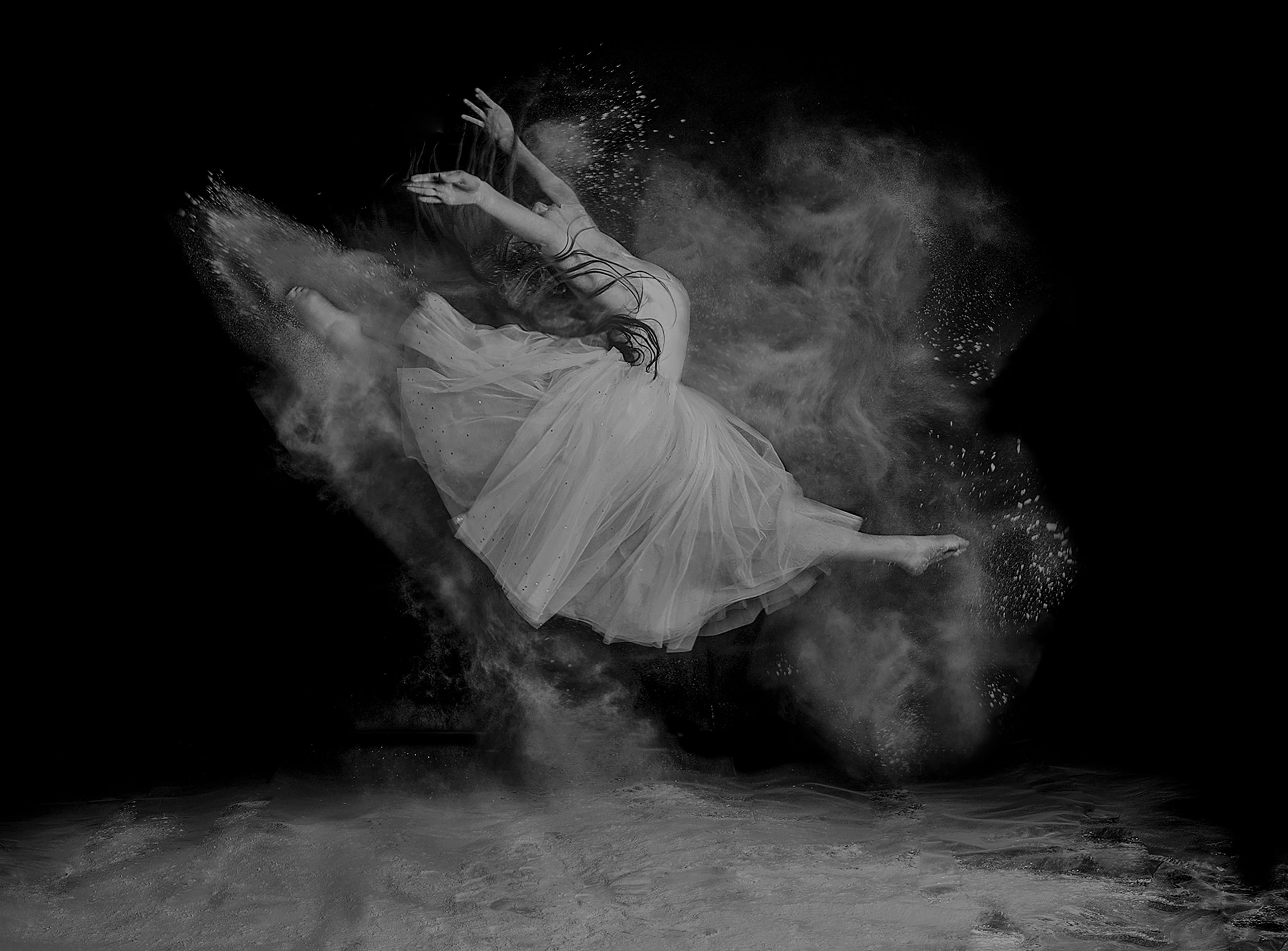
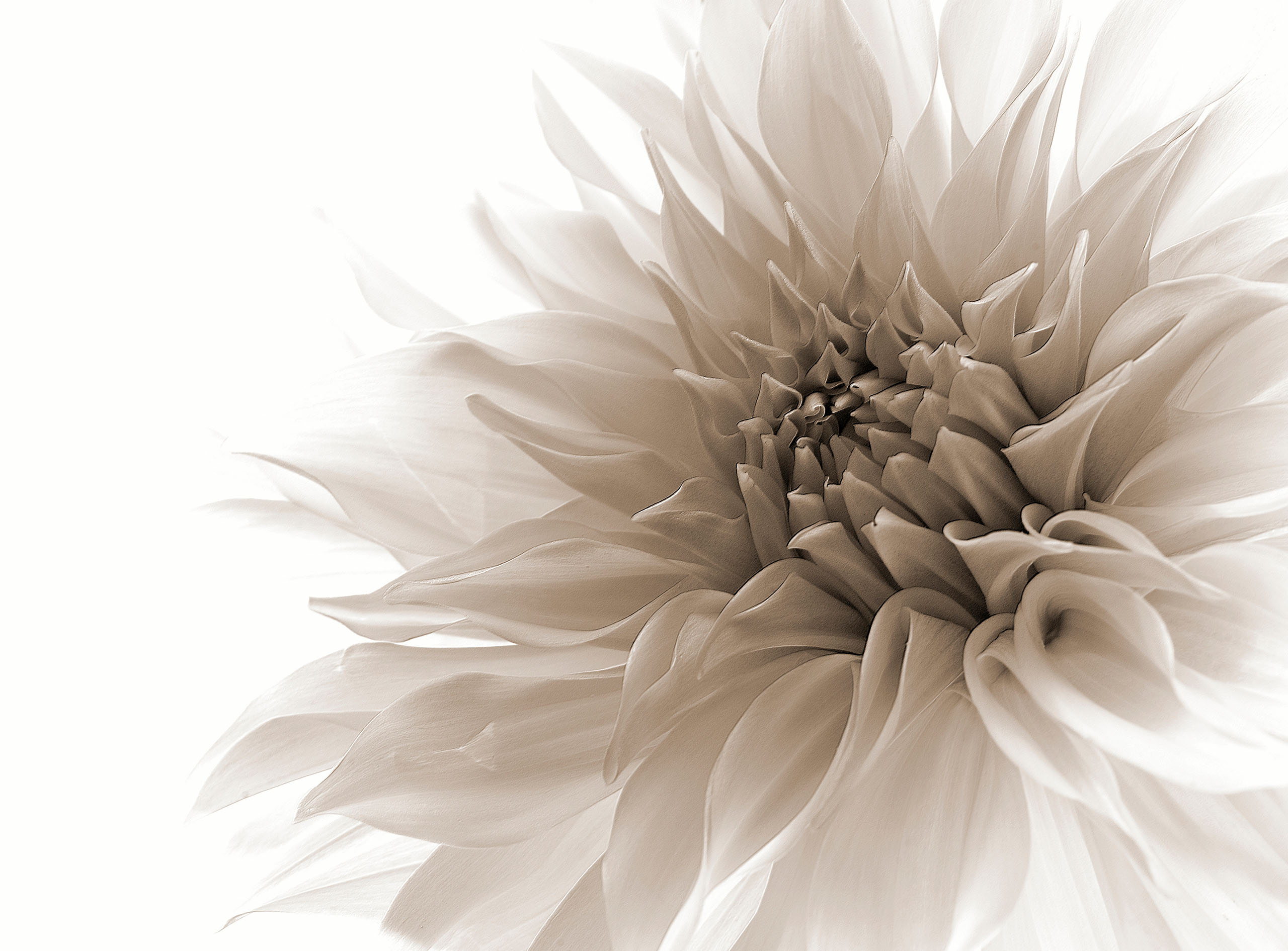
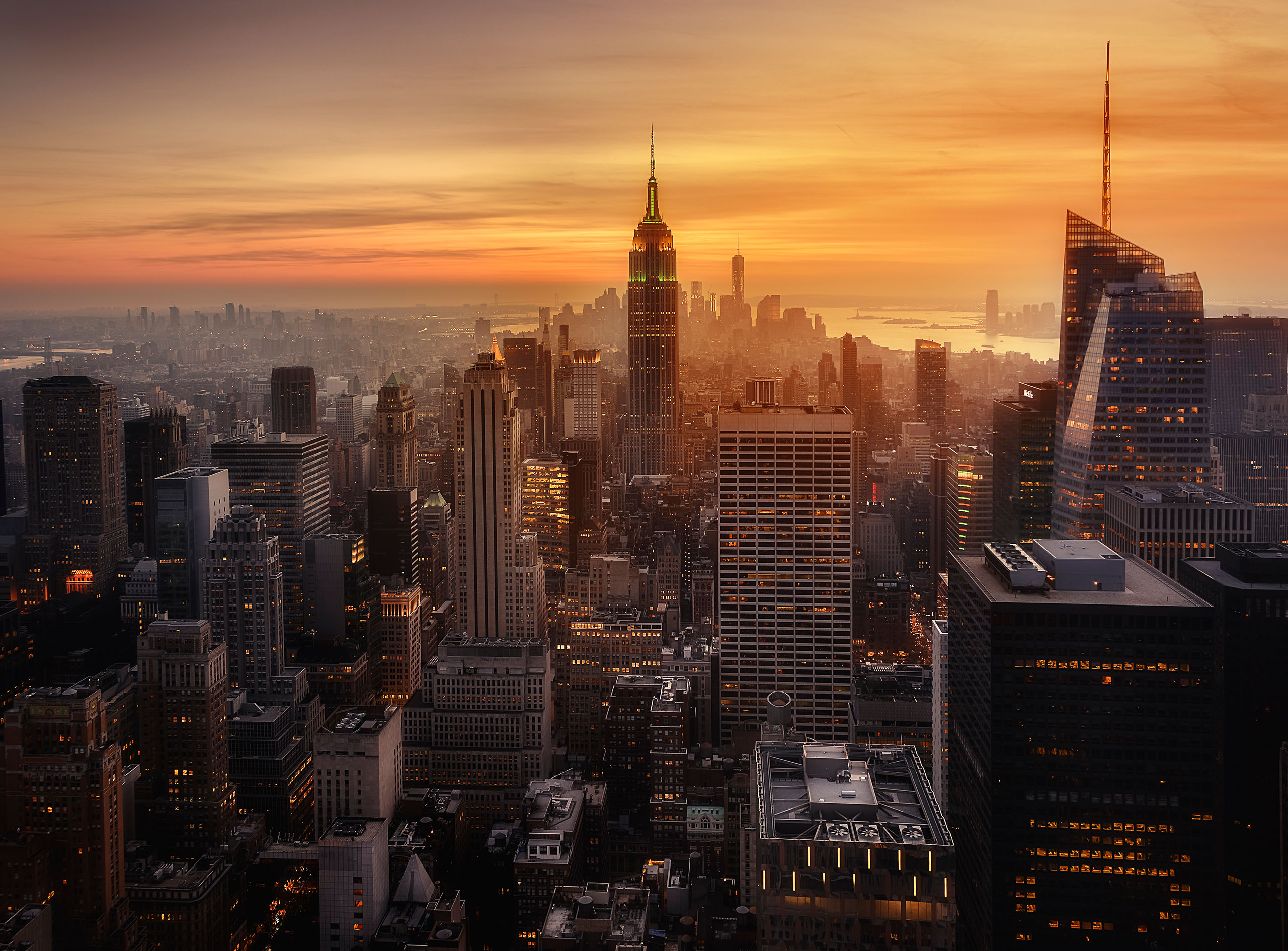
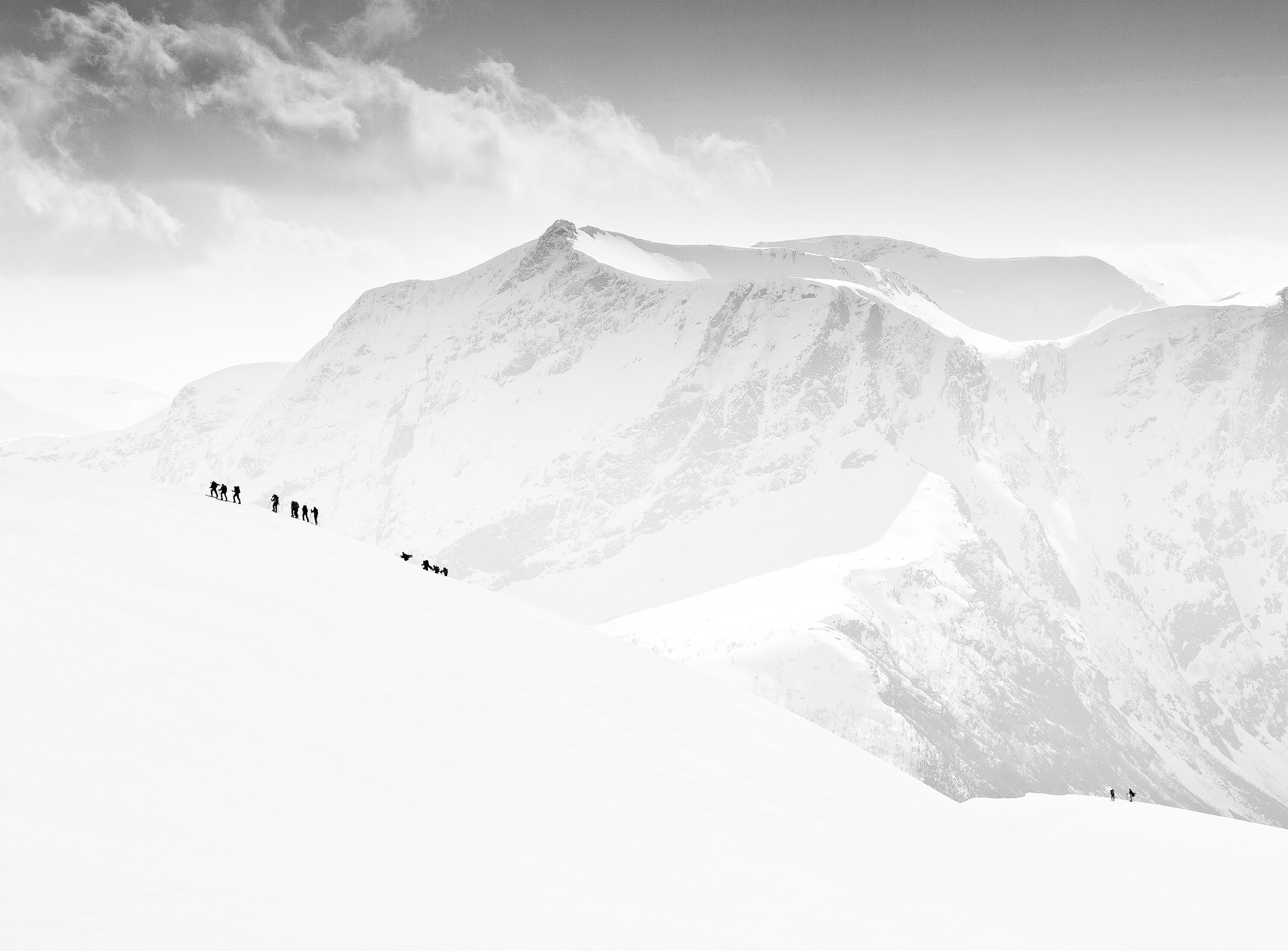
|
|
|
|


By Editor Michel Romaggi in collaboration with the author Theo Decker
Edited and published by Yvette Depaepe, the 1st of October 2025
‘ritratto di fanciulla’
Could you please give us more details on how you created the photo 'Ritratto di fanciulla'?
I used one light only: a beauty dish at a 45-degree angle to the side, but pointing very low so that it touched the stand.
Perspex with water droplets. Nothing new.
I used a Nikon Z7 with a Z 24-120 f4 lens (which I almost always use) at 100 mm, 100 ISO, 200 speed and f8.
I modified the full spectrum with non-dense IR filters at 550 nm in order to capture IR light as well as other wavelengths.
I swapped the red and blue channels, but didn't invert them completely to ensure a reddish atmosphere emerged.
I lowered the contrast curves in the dark part of the histogram, as well as the lights and whites, to create a darker atmosphere. These are minimal adjustments, but I increased the clarity significantly. Nothing else.
You have photographed many women, but today it seems that you are focusing on portraits. Could you explain this change?
In 2018, I set up a small studio (6 meters x 4 meters, 3 meters high) close to the office, and started shooting with strobe lighting.
While practicing with lots of models' portfolios, I simultaneously developed artistic personal projects. For years, these were mainly fine art nudes, but I am now finding portraiture very satisfying. It's a kind of evolution. I find portraits more communicative.
‘hands’
How do you select your subjects, how do you shoot them, and how do you treat them in post-production? Could you explain what you're looking for with the different staging options you use? Is it purely aesthetic, or is there more to it than that?
A photo can be considered successful when it has its own soul. When it communicates a mood or emotion. When a portrait works, it captures the essence of the subject. Of course, sometimes I don't have the key, or I can't find the lock, and in the end, the door to the soul remains closed.
‘ritratto di ragazza’
I like simplicity. I like dark tones, shadows and an intimate atmosphere. I don't care about the wardrobe, art or props departments. For me, a still should work with as few props as possible.
The model must feel comfortable. I talk to the model a lot before and during the shoot. The choice of music is important. I always play what she wants to hear, according to the style of the shoot. For a portrait of a young girl, for example, she asked me to play Coldplay. We started with that, but then it turned into a Mozart Requiem.
‘imaginary portrait’
I chose the girl because of her sweet and sincere, almost languid, eyes. Although I didn't know her beforehand, when I saw her portfolio, I knew there was a lot to discover behind those eyes.
To conclude this fascinating interview/tutorial, could you tell us about yourself and your relationship with photography?
I have always loved music and photography. When I was 14, my room smelled of developing and fixing. I have worked in the video and photography industry for years (too many now!), in the production department alongside directors, lighting cameramen and photographers of all levels: normal ones, some mediocre and some legendary.
It's incredible when the level is really high and the artist remains simple, humble and kind.
‘reddish’
‘mellow yellow’
 | Write |
by Editor Yan Zhang
Edited and published by Yvette Depaepe, the 29th of September 2025
‘Patagonia Moonlight’
Landscape photography is not just an art, it is also an act of endurance, exploration, and personal vision. This is especially true in Patagonia.
Not long ago, I read an article titled “Why I’m not going back to Patagonia as a photographer” [1] by Chandler Borries. Although I don’t agree with many of the author’s views, the article raises a question that is worth pondering: Nowadays, the increasing convenience of transportation and the continuous reduction of photography costs have made it easier than ever for us to reach those remote areas that were once out of reach and engage in landscape photography. So, in this era, can we still create truly original photography works, especially in those popular regions?
In this article, I will share my experience of photographing Patagonia over the years from different dimensions.
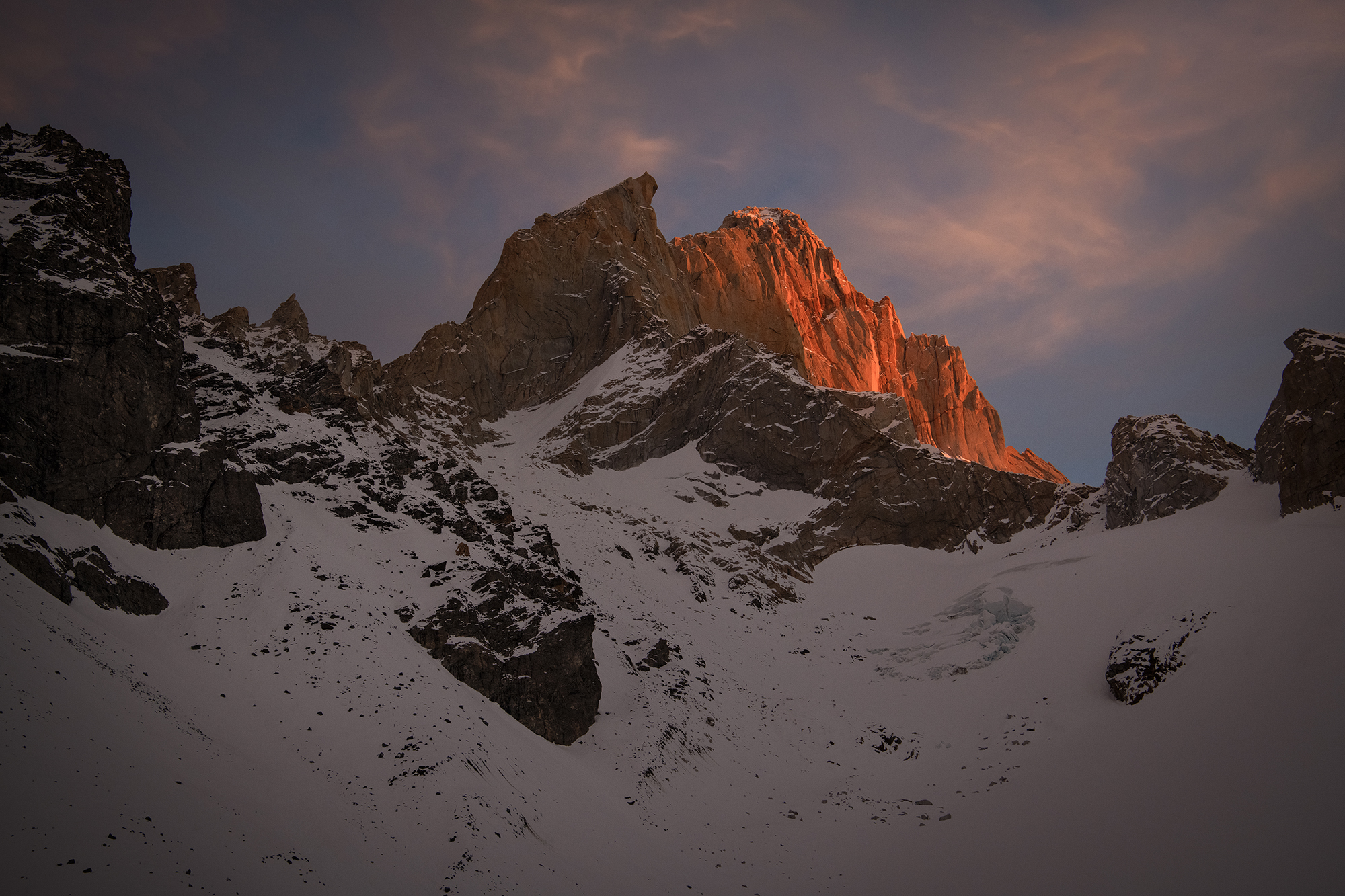
Patagonia Is Transforming into a Photography Pilgrimage
The iconic peaks of Patagonia are renowned for their unique forms and pristine beauty.
Over the past decade, Patagonia has gradually become a hot playground for photographers from all over the world. Indeed, from March to May every year, individual photographers and photography workshop teams can be seen everywhere, whether in the small town of El Chaltén in Argentina or on the hiking trails in Torres del Paine National Park in Chile.
‘Patagonia Autumn Night’
‘Dreamland’
Some popular shooting spots have even experienced crowding and competition for camera positions. This once remote and desolate place is transforming into an annual photography pilgrimage, attracting landscape photographers from around the world. As a result, however, a growing number of Patagonia images now appear repetitive and lacking in originality.
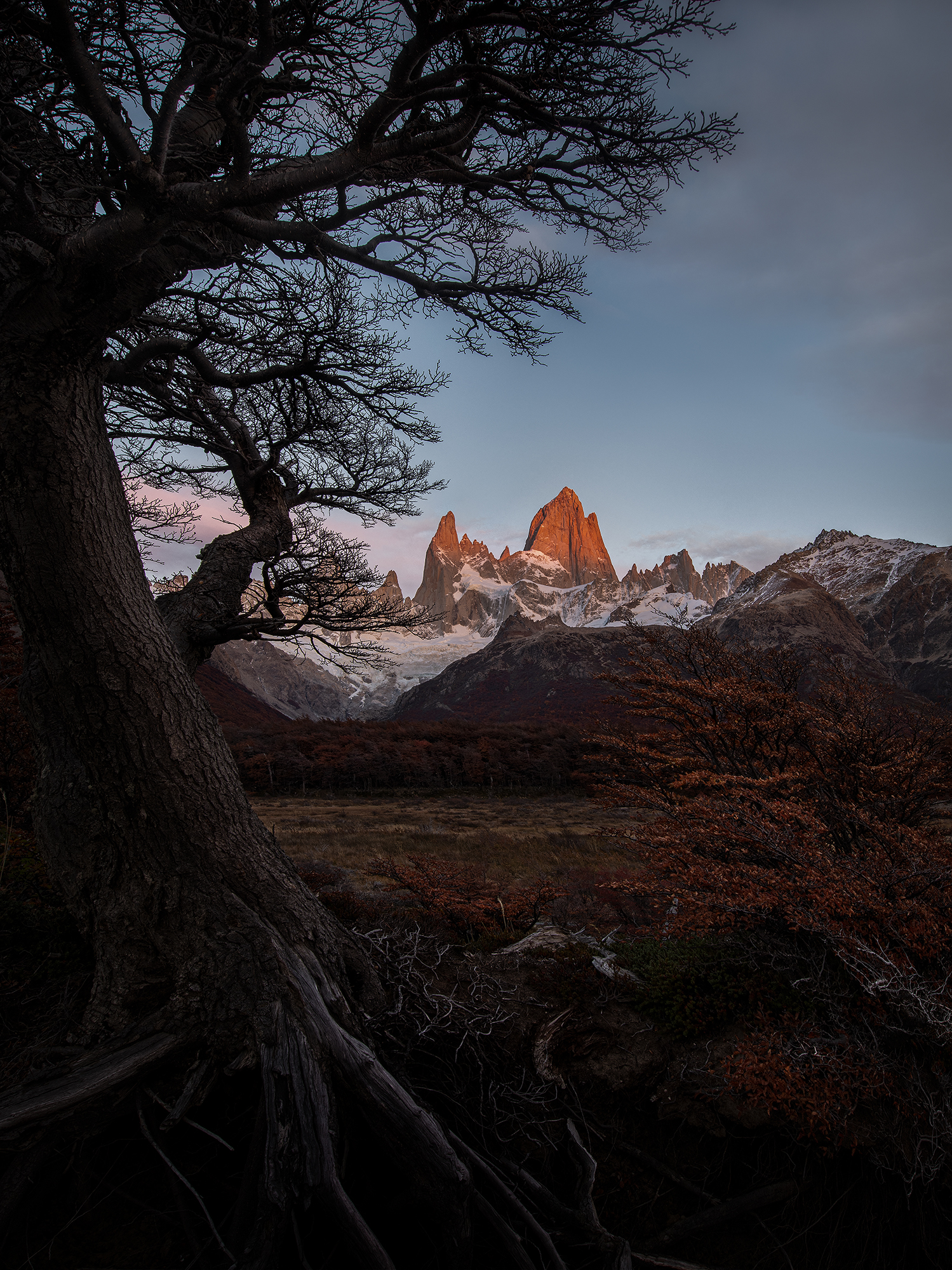
‘Torres del Paine – From a higher viewpoint’
You Didn’t Hike Farther, You Didn’t Climb Higher
Why does this happen? Much of it has to do with the herd mentality that most people have. Many photographers tend to follow the crowd – when we see amazing Patagonia photos on social media (such as Instagram), we want to go to the same place and shoot similar images or just replicate the stunning beauty.
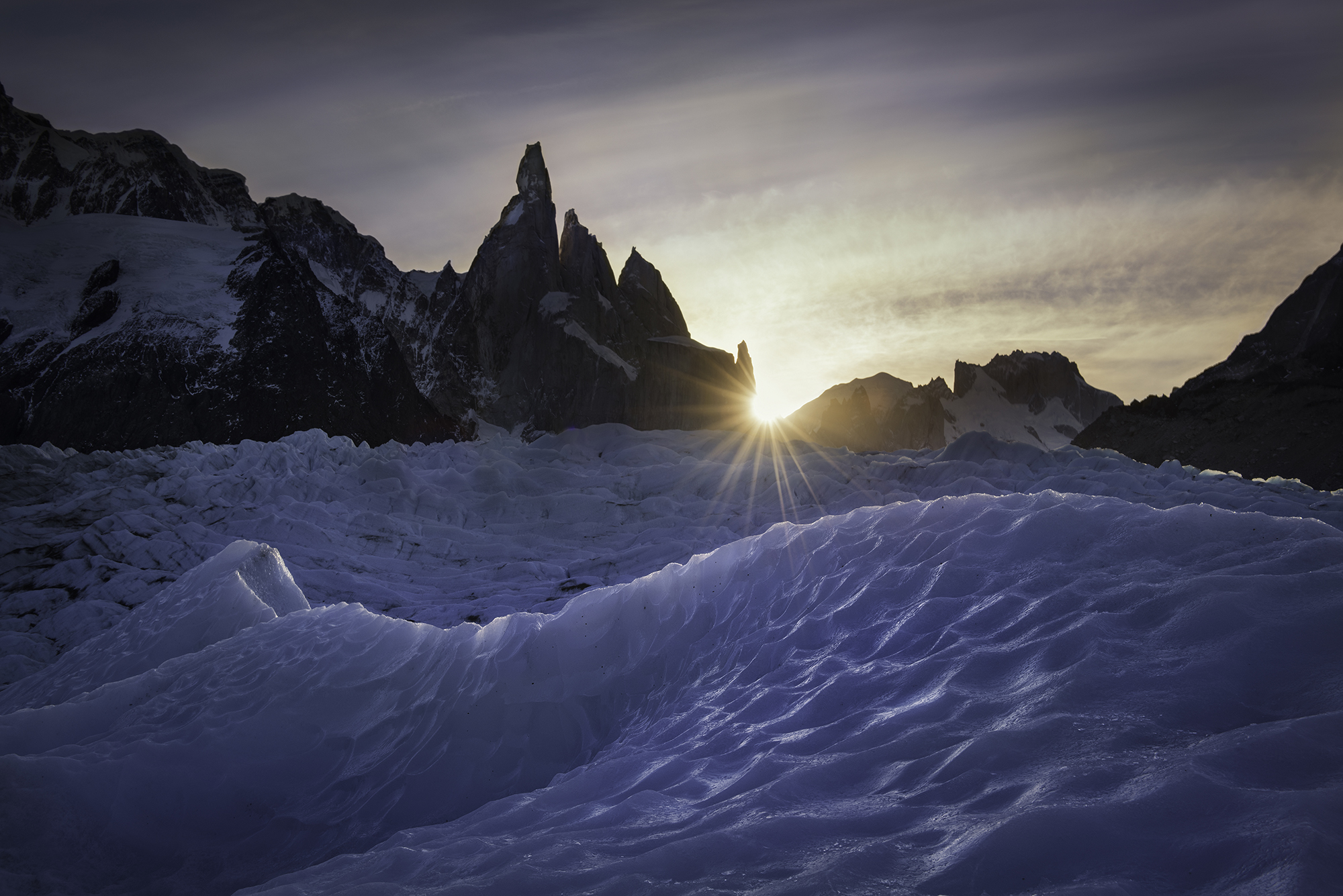
For the average photography enthusiast, there's nothing wrong with following the footsteps of photography masters and taking photos that are similar, or even identical, to their work. In fact, this is a common learning path for many beginners. However, as a serious photographer, we must maintain independent thinking and avoid blindly following trends. Only in this way can we create truly original and personal photographs.
Although numerous photographers travel to Patagonia each year, often producing repetitive and uninspired images, this region is by no means devoid of creative space. On the contrary, for landscape photographers, Patagonia holds infinite possibilities and inspiration, a source of immense depth and tension.
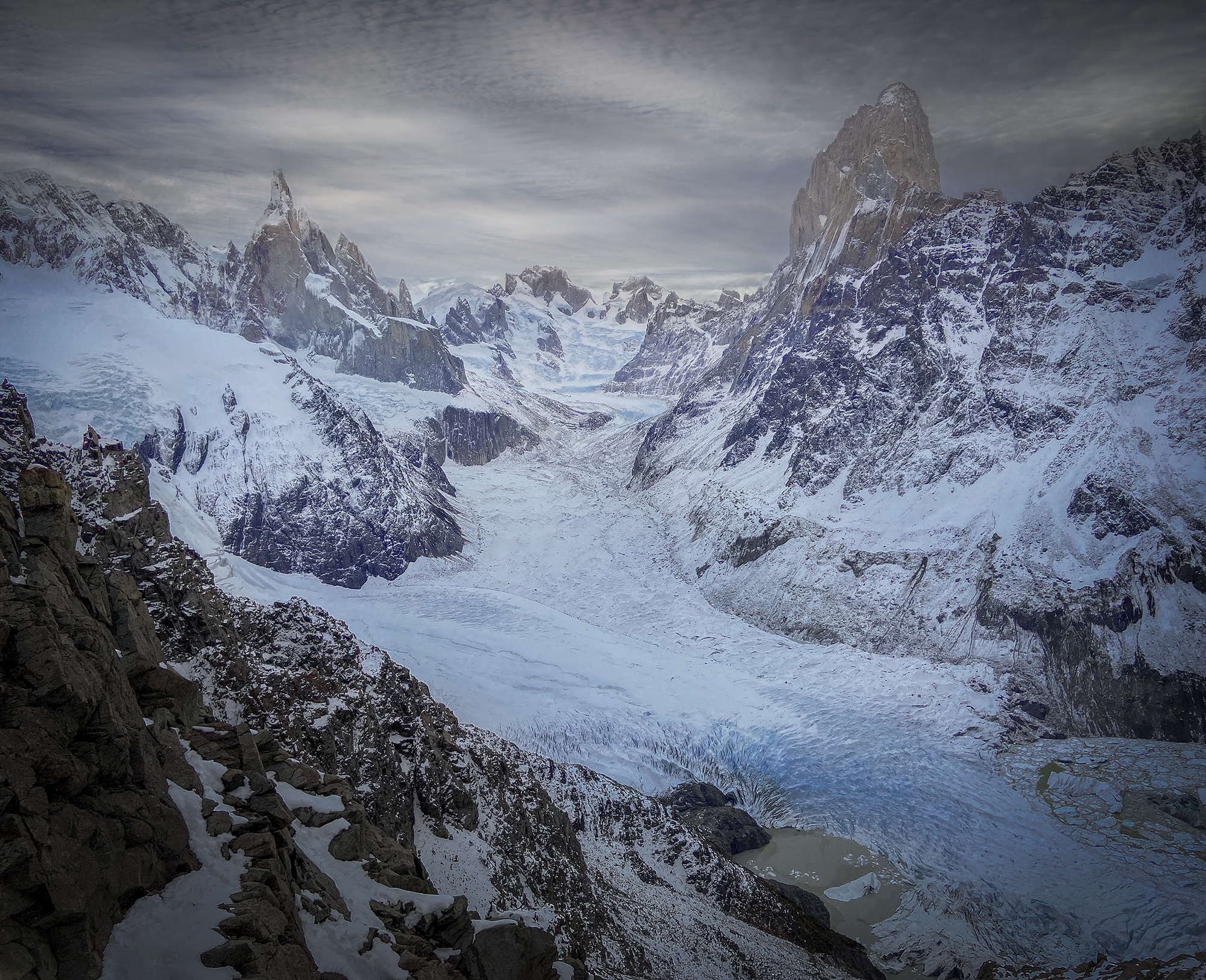
If a photographer complains that Patagonia's crowded landscapes and limited photo spots make it difficult to create truly original work, it likely means they haven't put in enough effort – perhaps they haven't hiked farther, climbed higher, to discover landscapes that haven't been thoroughly explored by others. Only by venturing into the mountains and transcending conventional perspectives can one discover a Patagonia that's truly theirs.
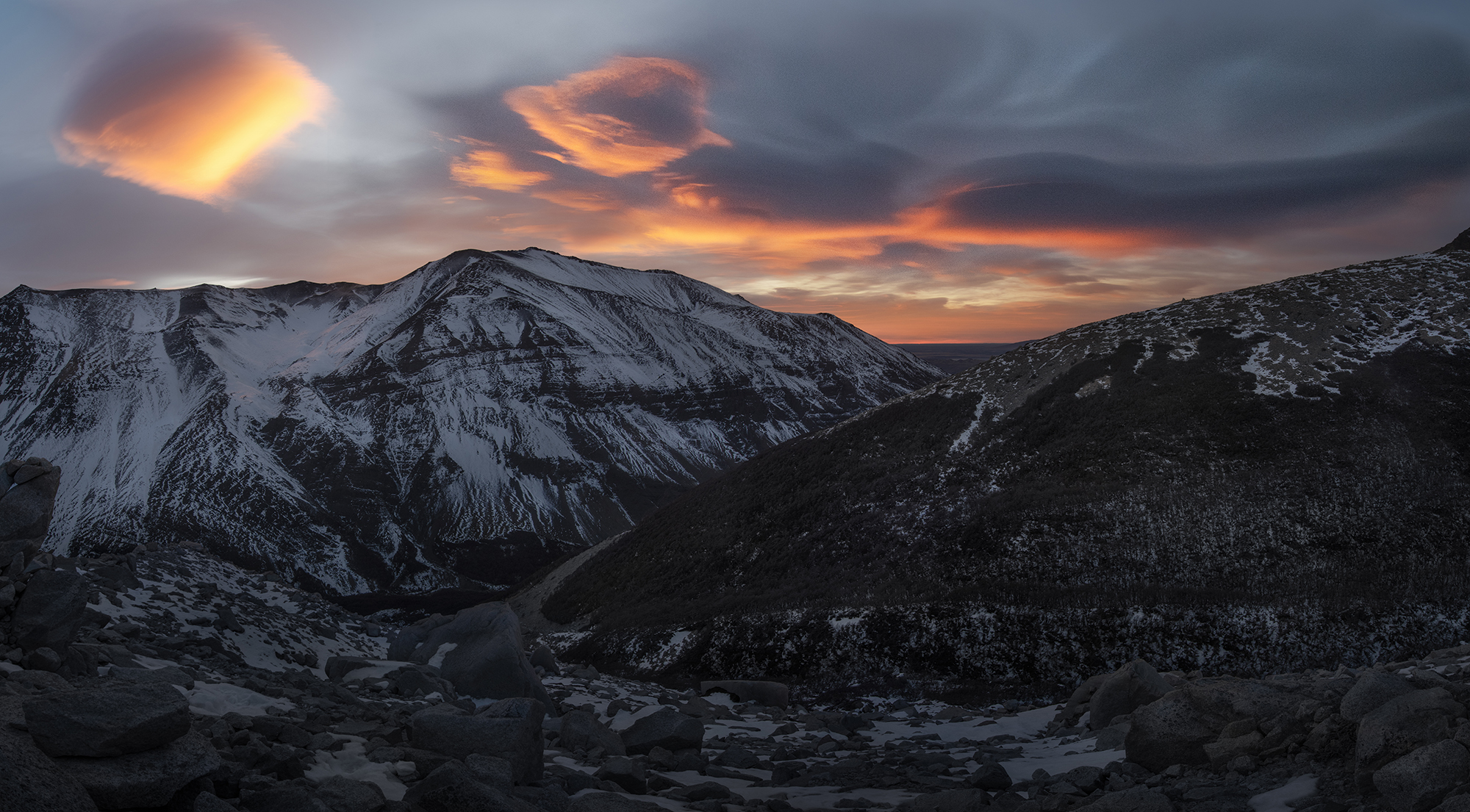
The Ultimate Testing Ground
While many photographers capture Patagonia from popular viewpoints or along well-trodden trails, I explore this mountain range with a different approach – I climb to remote ridgelines, high alpine lakes, and some named or unnamed peaks, carrying my heavy camera gear through harsh weather and difficult terrain. It’s in these elevated, hard-to-reach places – where few, if any, have stood with a camera – that I find my perspective.
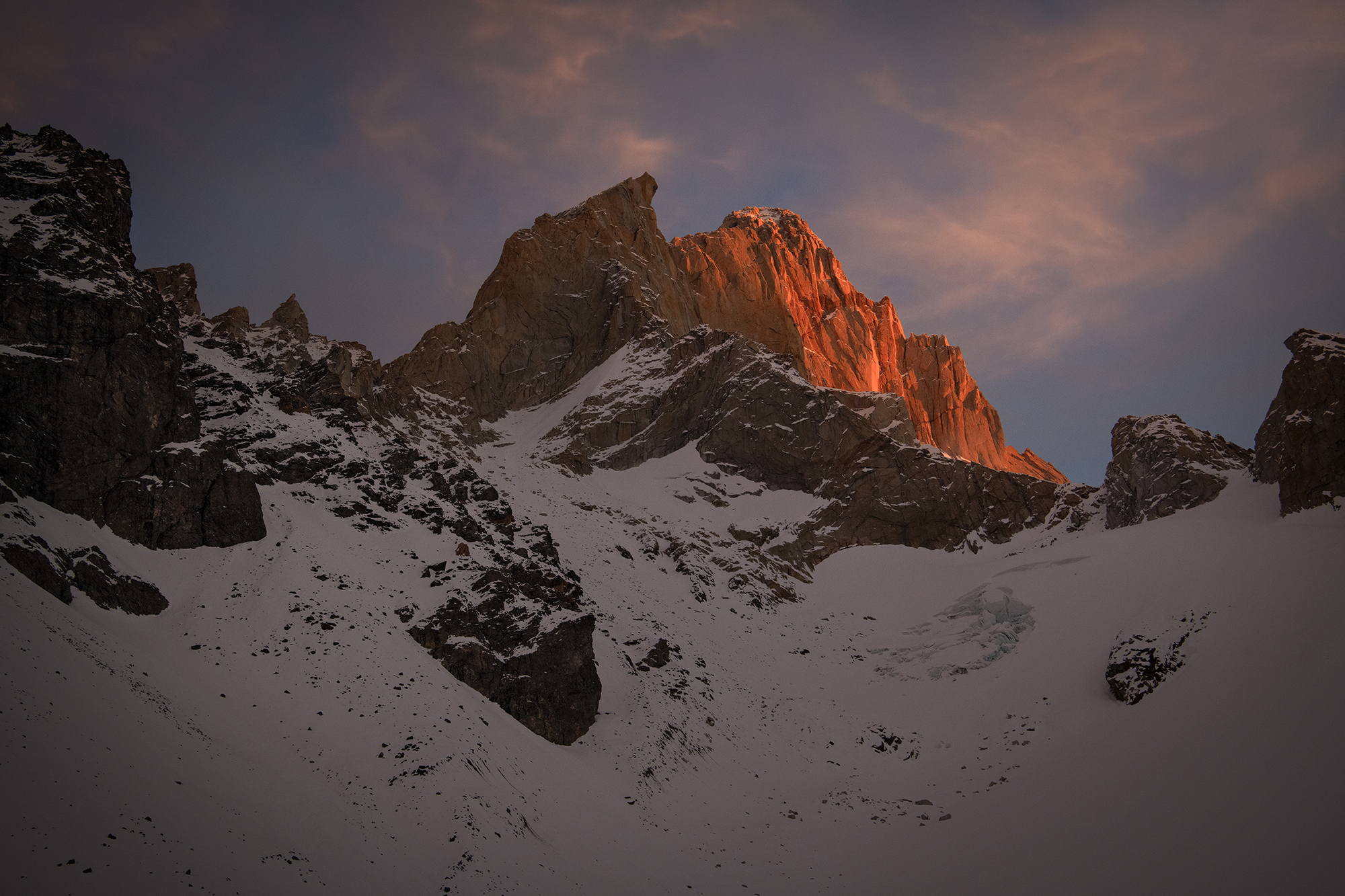
Many times, I must camp near the ridges and patiently wait – sometimes for days – for the right window of light. I must be also ready to accept that it might not come at all. Such great uncertainty is what makes the reward so deep. When the light does appear – sweeping across jagged peaks, igniting the sky in fire, or softly revealing a hidden lake – it feels like a gift. The images I bring back are not just pictures of Patagonia, but visual records of personal journeys into the wildest corners.
‘Night Sky over Fitz Roy’
In this sense, Patagonia tests not only your physical and mental resilience, but your inner compass – the ability to resist repetition, to hold onto your own vision, and to seek solitude when others stay on the path.
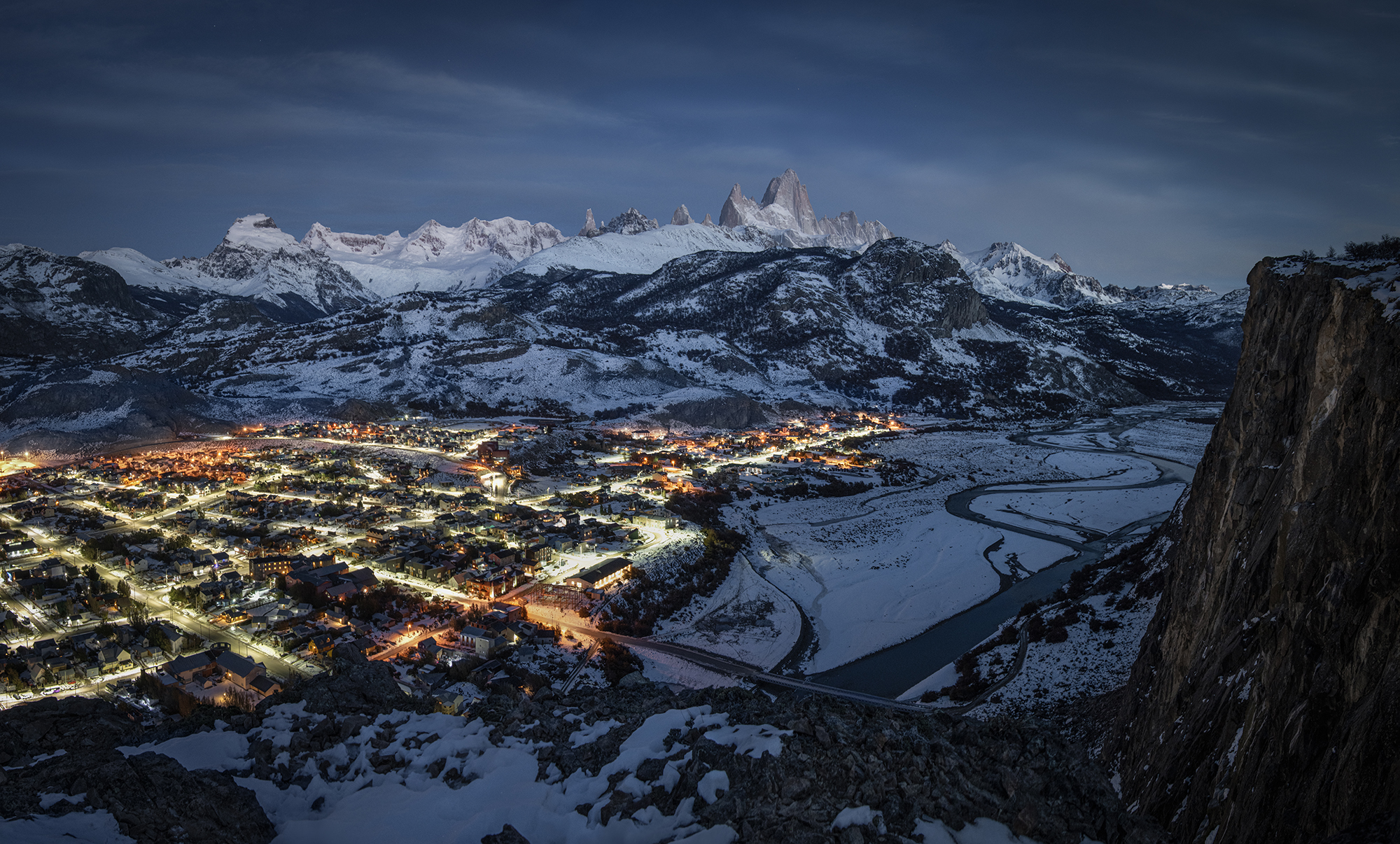
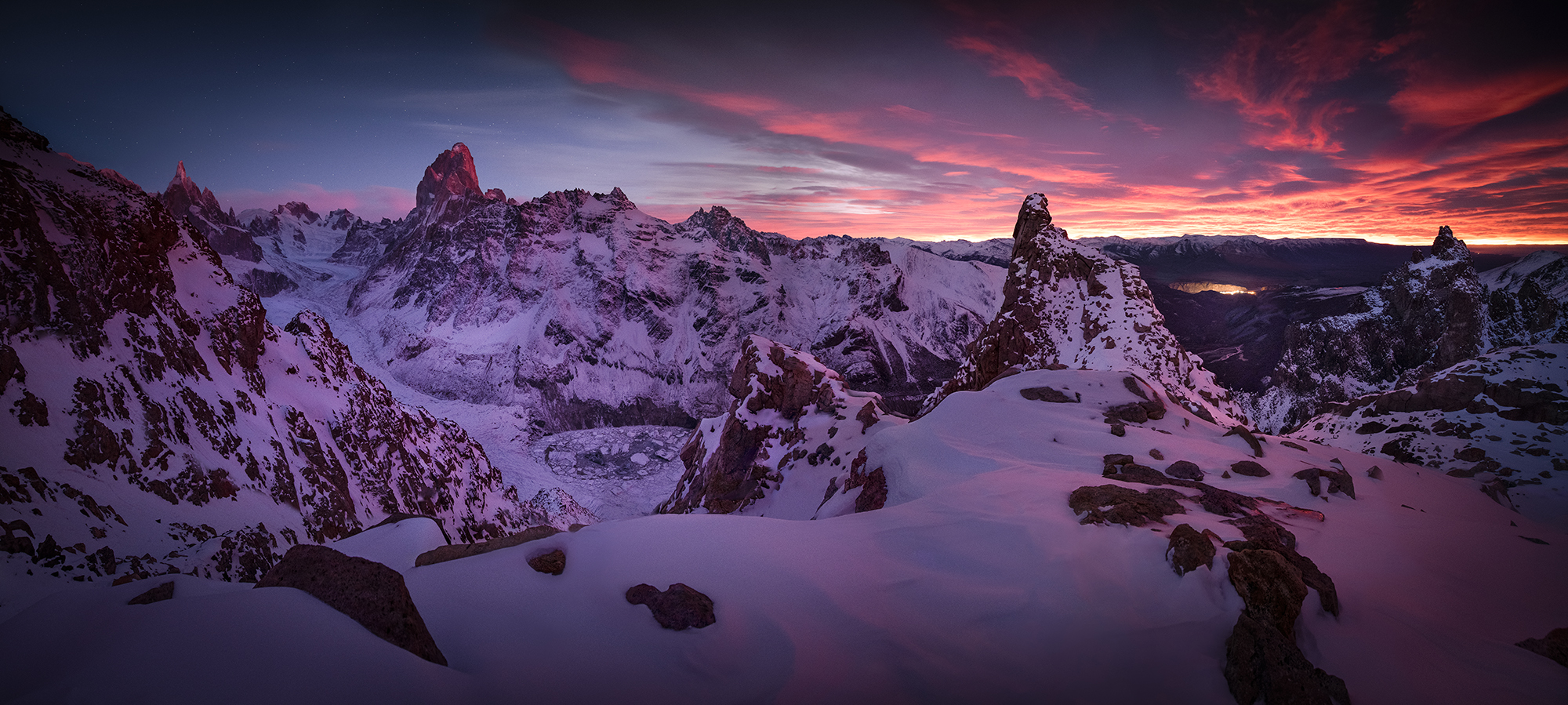
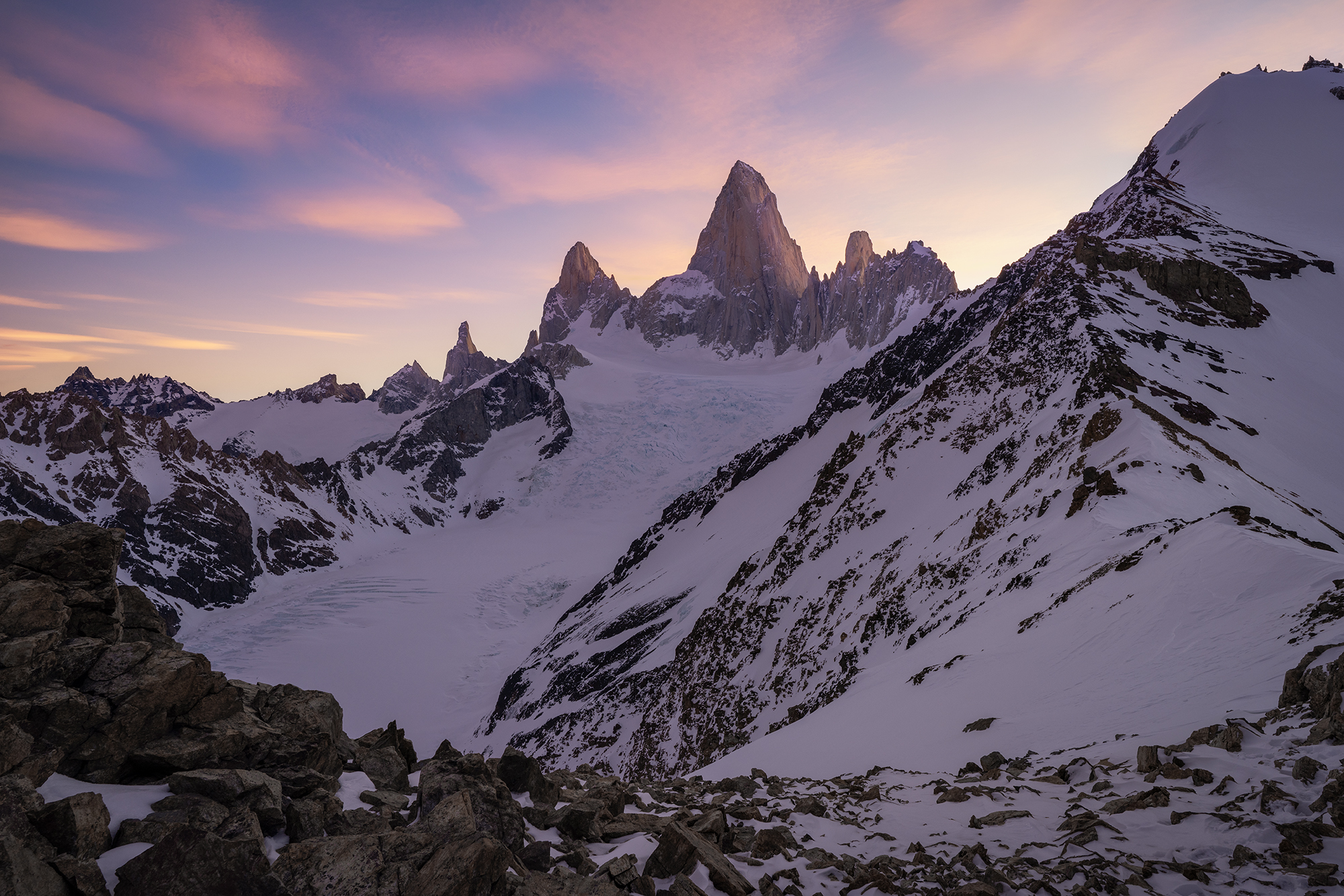
So, Patagonia is a place that I always want to come back. It is a destination that continues to challenge and refine my craft – not just as a photographer, but as an artist, an explorer, and a human being.
Reference: [1] https://fstoppers.com/landscapes/why-im-not-going-back-patagonia-photographer-696926
 |
 | Jane Lyons CREW Thank you for sharing your art and adventures with us Yan. Your work is wonderful! |
 | Angelika Vogel PRO Another spectacular Portfolio, Yvette! I love Patagonia and these pictures are a dream! Congratulations to all artists! |
 | Ruiqing P. PRO Behind your photographs, I see not only a profound vision but also a rare resilience of spirit — a combination that makes your art unforgettable. |
 | Excellent images and very interesting and inspiring story, congratulations! |
 | Chong Q. Wu PRO Fascinating Patagonia snow peak photos. And it would be even more exciting if you put all your top snow peaks next to each other. Your exploration and photography are truly admirable at the altitudes! Congratulations. |
 | Bruce H Wendler PRO Never give up on those favorite sites Photographers swarm. |
 | Mei Xu PRO Thanks for sharing those unique views and amazing images. |
 | Alberto Fasani PRO Thanks for sharing your experience and for the nice photos |
by Yvette Depaepe
Published the 26th of September 2025
Ethereal photography is a style of photography that aims to capture images with a dreamlike, otherworldly, or surreal quality. It often evokes feelings of peace, mystery, and transcendence, blurring the line between reality and imagination.
'One Summer Night' by Shenshen Dou
It often involves using soft lighting, pastel colors, and a shallow depth of field to create a sense of haze or blur in the image.
Ethereal photography can be achieved through a variety of techniques, including long exposures, intentional camera movement, and creative post-processing. It is often used in landscape and nature photography, as well as in portrait photography to create a dreamy and romantic atmosphere.
LIGHTING
· Soft, diffused light (fog, mist, early morning, golden hour).
· Backlighting to create halos, glows, or silhouettes.
· Overexposure for a washed, dreamy look.
ATMOSPHERE
· Natural fog, mist, or smoke.
· Long exposure to blur water, clouds, or moving subjects.
· Textures added in post-processing for depth.
COMPOSITION
· Minimalism: fewer elements in the frame.
· Symmetry or reflection (in water, glass, mirrors).
· Negative space to emphasize the subject’s fragility or stillness.
COLOUR & TONE
· Muted palettes: whites, creams, pastels, soft blues/greens.
· Monochrome or sepia for timelessness.
· Subtle tints added in editing (cool tones for mystery, warm tones for calm).
FOCUS & SHARPNESS
· Shallow depth of field (soft blur around the subject).
· Motion blur to suggest movement or ghostly forms.
· Lens filters (diffusion, prisms) to soften or distort reality.
SUBJECTS
· Misty landscapes, forests, or mountains.
· Still waters, abandoned places, ruins.
· Human figures as silhouettes, blurred, or partially hidden.
· Birds, trees, or natural patterns that feel fragile or fleeting.
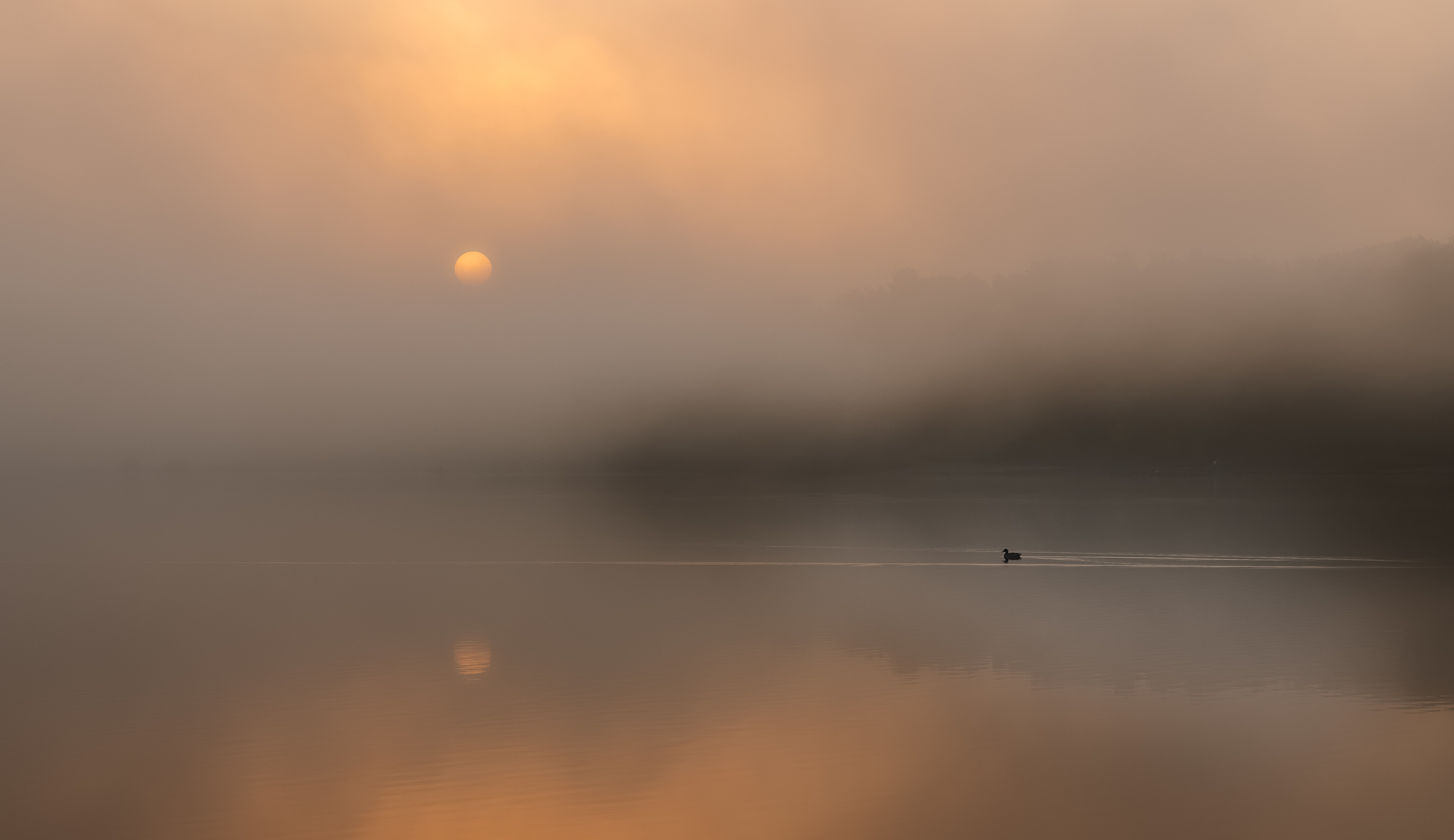 'The loneliness of the long-distance runner.' by Slawomir Kowalczyk
'The loneliness of the long-distance runner.' by Slawomir Kowalczyk
Ethereal photography can be a powerful way to convey emotion and mood in an image, and it has become increasingly popular in recent years as a way to create a sense of escapism and enchantment in photography, making viewers feel like they've stepped into a dream.
 |
 | Anja Buehrer CREW Many thanks Yvette!! |
 | Adrian Popan PRO Stunning, thank you Yvette! |
 | YANGYING PRO It’s wonderful. Thank you for sharing, Yvette! |
 | Yanyan Gong PRO Thank you very much for sharing the technique and inspiring images, dear Yvette! |
 | Jacob (Jian) Xu CREW Another fantastic article! Thank you, Yvette, for sharing such insightful techniques and for the wonderful images that beautifully illustrate the theme. Congratulations to all the featured artists! |
 | Imi Koetz PRO So artistic images !! Congratulations to all !! |
 | Fantastic article with inspiring and tasteful images. Congratulations to the featured artists. 💯💯 |
 | Miro Susta CREW Very interesting and educative write up accompanied with wonderful photos, well done dear Yvette, thank you for bringing it to us |
 | Yan Zhao PRO Strong emotion power, beautifully presented. Thank you for sharing, Yvette! |
 | Cristiano Giani PRO ...love it. Congrats and thanks for sharing... |
 | Yaping Zhang PRO 梦幻空灵,精美绝伦,动人心弦的艺术品收藏了!感谢 Yvette 向我们介绍 Ethereal Photography!
|
 | Xiaolin Ni APA PRO What a beautiful and inspirational collection of artwork! Thanks Yvette for introducing us to Ethereal Photography! |
 | Rachel Pansky PRO Thank you Yvette for an interesting article and review and for the beautiful and inspiring photos. Love this style of photography. |
 | Gila Koller PRO Interesting article with inspiring ethereal photos. |
 | Tatsuya Moments PRO It’s wonderful. There is no better way to express it. |
 | Hugh Warren PRO A lovely soothing collection! |
 | Yvette Depaepe CREW Thanks a lot, Hugh! |
 | Hengameh Pirooz PRO Very beautiful, as if you are immersed in the softness of the subjects and the soft colors, as if time is passing slowly, but in my opinion, the photos are very close to paintings in this style. |
 | Yvette Depaepe CREW Painterly photography is so great! Thanks for your appreciation, my friend! |
 | Angelika Vogel PRO Dear Yvette, thank you so much for this wonderful portfolio! I love all of the artistic, atmospheric and dreamlike works! Congratulations to all of the artists and thank you so much for including one of mine! |
 | Yvette Depaepe CREW Love your work, Angelika ... and it fits so well in this article! |
 | Elizabeth Allen CREW Thank you for this wonderful article, dear Yvette, and the inspiring, atmospheric collection of images. |
 | Yvette Depaepe CREW Thank you, dear Elizabeth! |
 | Hans Repelnig PRO Inspiring theme and a superbe collection of photos, thankfully including some of Yvettes, representing this style of photography in many of her artwork. |
 | Yvette Depaepe CREW Thanks dear Hans ... Yes, this is my cup of tea ;-) |
 | Anita Singh PRO Wow collection, congratulations to all photographers |
 | Yvette Depaepe CREW Thanks a lot, dear Anita! |
 | Fiorenzo Carozzi PRO A collection of wonderful photographs . Thank you Yvette ! |
 | Yvette Depaepe CREW Thanks for your appreciation, Fiorenzo! |
 | Yun Thwaits PRO Wonderful article with beautiful images! Love them so much! Thank you for sharing, dear Yvette! |
 | Yvette Depaepe CREW My pleasure, Yun ... Thanks for your appreciation, dear friend! |
 | Eiji Yamamoto PRO Thank you so much for the interesting article with beautiful and great photos! It's so wonderful and inspiring! |
 | Yvette Depaepe CREW Many thanks for your appreciation, Eiji! |
 | Interesting article and superb pictures ! Thanks a lot, dear Yvette !!! |
 | Yvette Depaepe CREW Thanks, dear Gian! |
 | Ramiz Sahin PRO What a wonderful article and stunning photos. Thank you, Yvette. |
 | Yvette Depaepe CREW Thank you, dear Ramiz ... |
 | A wonderful article with beautiful photos. Thank ypu Yvette fpr choosing one of mine photos too |
 | Yvette Depaepe CREW My pleasure, Hilda ... Thanks for your appreciation! |
 | Raceala Elena PRO Happy to see my photo among so many wonderful photos!! Thank you so much, dear Yvette, and congratulations on the article!! <3 |
 | Yvette Depaepe CREW Your work is so beautiful, Elena ... Thanks for your appreciation, dear friend! |
 | Fran Osuna PRO I'm so happy to read an article that talks about and shows ethereal photography — a style that really lets your imagination, feelings, emotions, and mood run free. Such a beautiful gallery. Big thanks to Yvette for the magazine and for including one of my images in this amazing article! |
 | Yvette Depaepe CREW Thank you so much for your appreciation, Fran ... Your work has its place here, my friend! |
 | Me encanta este tipo de fotografía y suelo usar lentes antiguas modificadas para Ello... Gracias por el artículo. |
 | Yvette Depaepe CREW My pleasure, José ;-) |
 | Gabriela Pantu PRO Dear Yvette, such a great article about photography that is so much about feelings and mood, with such a beautiful collection of pictures.Thank you for bringing it to us, and thank you for including my picture. <3 |
 | Yvette Depaepe CREW Thank you,n dear Gabriela ... Your work fits so well in this gallery! |
 | Shenshen Dou PRO I learned a lot from reading this unique and informative article. The carefully selected images are very moving. I'm honored that my work was selected. Thanks Yvette, truly appreciate it! |
 | Yvette Depaepe CREW Thank you, Shenshen ... I love your dreamlike work ! |
 | Jane Lyons CREW What a great subject, Yvette. I am motivated. The photographs you selected are wonderful! Thank you for this. |
 | Yvette Depaepe CREW Thank you, Jane! |
by Yvette Depaepe
Published the 24th of September 2025
'Compelling beach stories' was the summery challenge of the last contest.
To photograph compelling beach stories, focus on capturing the interaction of light, subject, and environment, rather than just the scenery. Utilize the golden hour for soft, warm light and experiment with different angles, focal points, and shutter speeds to create dynamic and engaging images.
The winners with the most votes are:
1st place : Luciano Caturegli
2nd place : Dieter Reichelt
3rd place : Paolo Bolla
Congratulations to the winners and honourable mentions.
Thanks to all the participants in the contest 'Compelling beach stories'
The currently running theme is 'Incredible Fog Photography'
For most photographers, nothing compares to shooting in the fog. The mysterious shapes, the silky textures, the ethereal light – it’s a uniquely magical experience, and it’s a recipe for breathtaking photos.
This contest will end on Sunday the 5th of October at midnight.
The sooner you upload your submission the more chance you have to gather the most votes.
If you haven't uploaded your photo yet, click here.
Good luck to all the participants.
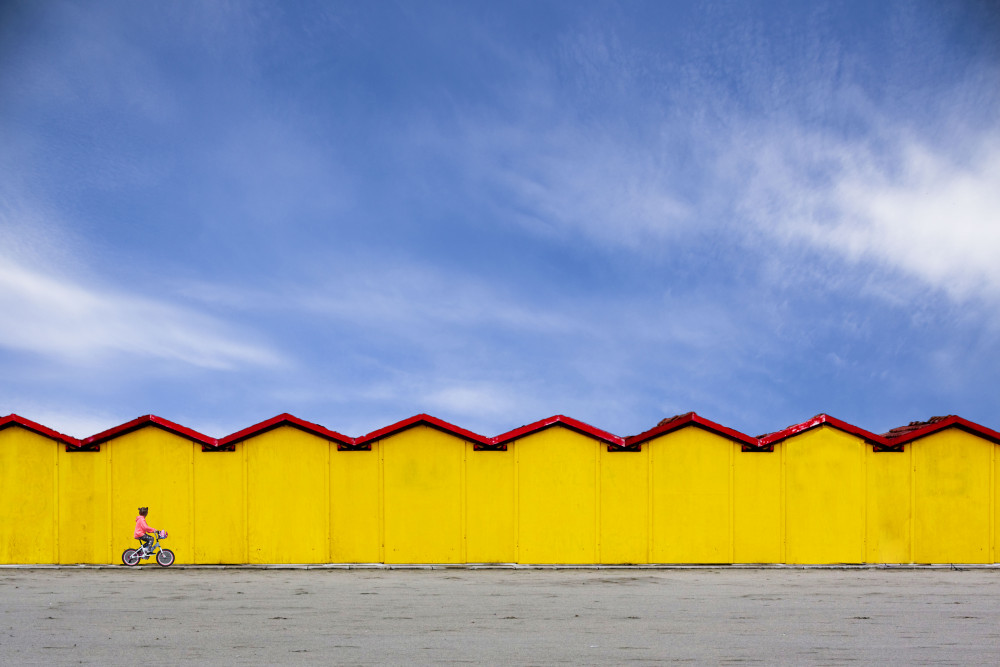
1st place: by Luciano Caturegli
by FranzStaab
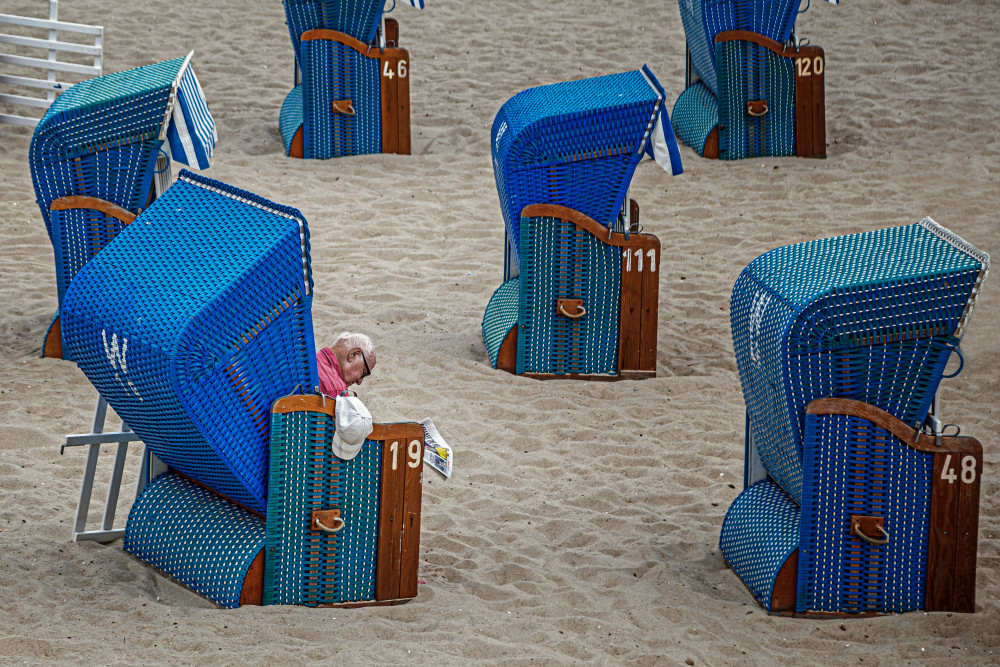 by Urs Zimmermann
by Urs Zimmermann
 |
 | Congrats to all the photographers !!! |
 | Chris Hamilton PRO Great images. |
 | Gabriela Pantu PRO Congratulations, amazing pictures!! |
 | Marion Keijzer PRO Iedereen de complimenten, fantastische foto's |
 | Marion Keijzer PRO |
 | António Carreira PRO Congrats to all the participants! |
 | UstinaGreen PRO Beautiful and romantic collection super work! Congratulation all and thanks dear Yvette! |
 | Congratulazioni a tutti i vincitori |
 | Molly Fu APA PRO Congrats to all the winners and participants! Thanks dear Yvette! |
A Conversation with Dr. HJ Yang
by Editor HJ Yang
Edited and published by Yvette Depaepe, the 22nd of September 2025
‘Hope From Doubt’
William Patino is a world-renowned landscape photographer from Te Anau in New Zealand. He is widely considered to be the best landscape photographer in New Zealand today. He has won numerous awards and been published internationally and has taught thousands of enthusiastic photographers through his workshops and online tutorials.
Please visit his website www.williampatinophotography.com for all his work and programs.
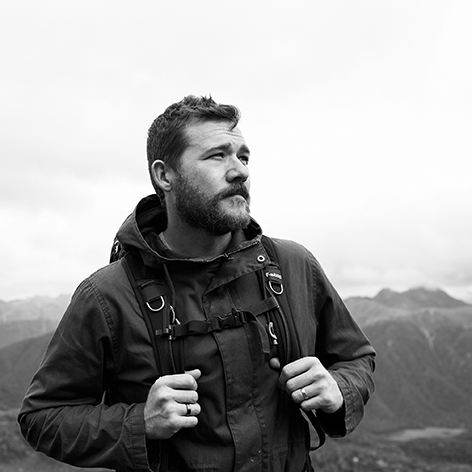
In May 2025, I had the opportunity to visit him in Fiordland, New Zealand, and aboard the Flightless ship Pure Salt by helicopter from Te Anau. We spent several days together on the ship during our photo expedition, which was led by our mutual friend Marc Adamus.
Hello Will, it is a great honor and pleasure for me to visit you. Your unique programs and photographs have attracted and touched the hearts of many people all over the world, including many in our 1X community. Thank you for your contribution to the world of photography and for making this conversation possible.
How did you get into photography?
Firstly, HJ, thank you for your kind words and for interviewing me. It was a pleasure to share my corner of the world with you recently.
I started my photography journey back in late 2011. Initially, this stemmed from my passion for skateboarding as a youth. Videography and photography are part of the sport, and I was interested in videography throughout my teens. However, I eventually tried still photography and really enjoyed it. Browsing online, I came across some landscape photographs that immediately drew me in. I tried capturing a sunrise one morning and was completely hooked. I haven't stopped since.
Who influenced your photography when you started?
My primary inspiration is nature, and the sense of reverence and awe that we experience during those rare, fleeting moments of surprise. The element of the unknown constantly drives and inspires me. When it comes to influences, Marc Adamus (marcAdamus) has undoubtedly had a strong impact on my work. When I first saw his photographs in 2012, I was deeply moved by them in a way that is hard to explain. His photography expressed how I felt in nature and what I wanted to convey in my own images. It was not just about the aesthetics, but the feelings they evoked. I wanted to create the same feeling that I experienced.
Looking at his images taught me a lot about how he worked with light and composition in grand scenes. It was unlike anything I had seen before in my part of the world.
Years later, I feel honored to call him a friend. We have shared many fond memories of exploring the landscape together. Of course, it must be said that there are many other inspiring photographers out there, and I'm generally motivated by seeing people get out there and develop their art and craft. It’s refreshing to see people doing what they do and doing well. I’m also influenced by master artists who used paint as a medium, such as Albert Bierstadt and Thomas Cole, who were part of the Romanticist movement. For me, it's all about emotion and expression.
How did you come to create your unique photography program?
I have a large catalogue of online video courses which I started creating in late 2018. I noticed that there were lots of tutorials on processing, but hardly anything based in the field. Having taught myself through trial and error, I know how frustrating it can be for amateurs learning the craft, and I thought that many people could benefit from such videos. So, I decided to create video lessons showing various aspects of landscape photography, not just processing.
I continued to develop these tutorials, but once the borders to New Zealand closed during the pandemic in 2020, I began creating a larger catalogue. I haven’t stopped since, and I now also complement my online courses with an active YouTube channel.
What makes this program so successful?
I’m so busy running workshops, working as a photographer and filmmaker, and being a family man that I don’t have much time for anything else. I use a small agency in the US to help promote my online courses and take care of some of the other logistics. However, even with that support, you still need an effective product that people enjoy. Thankfully, this seems to be the case, and I think it’s because I don't hold anything back when teaching. I try to get straight to the point and cover all the necessary information. I just want things to be relatable and effective. It probably helps that I get to work in spectacular and inspiring locations, too.
Which aspect of your work do you enjoy the most: leading photo tours, running workshops, or delivering online courses?
When it came to the business side of things, I was mindful that if I made photography my career, I really didn’t want to lose my passion for it or the personal benefits it had brought me, such as providing me with an outlet. Teaching has enabled me to maintain a personal connection to my photography and keep it as an outlet. It’s not commercial, and I don't create for anyone else. If I had to do that, I think I would have burned out and lost my love for photography.
Two big perks of my job as an educator are seeing the joy on people's faces when they're moved by a landscape and seeing them light up when they create a special image. It’s incredibly rewarding, and I’m thankful for it. I get a lot of feedback from people online, too, so knowing that I’m potentially helping others on their photography journey is a real blessing and keeps me inspired. Photography has changed my life in many ways, and I am very grateful if I can help others on their photography journey.
Why do you think your photography is unique?
Others can decide for themselves whether it is or isn’t, but I think what really sets some landscape photographers apart is not necessarily the technical or creative elements, but rather having a deep, intimate connection with the land and subject with which they work. Consider Ansel Adams and Yosemite, or Guy Tal and Utah: there is something transcendent in their work that comes from spending thousands of hours in a place or studying a subject.
I live in Fiordland in the south-west of New Zealand. This region is where my heart lies; it’s my passion, and it's where I do most of my exploration and photography. It’s a unique part of the world with very distinct characteristics. I have a deep connection with the land here and strive to express that through my photography.
What is the most challenging part of your photo experience, and why?
I consider myself very fortunate to have experienced many breathtaking and elusive moments in nature. I have an inexplicable urge to capture such moments in photographs, but they are often unexpected and derive from a series of events that suddenly culminate in a moment of revelation. Experiencing this is the greatest joy, and nothing compares to it or provides greater inspiration. Being surprised by nature is the greatest joy.
The challenge I face is giving myself time to simply be in nature without too many preconceived ideas. I’m often not satisfied with my work, so naturally I want to plan trips or projects to raise the bar, but generally the harder we try, the further we push ourselves away from those special moments. So, it's about letting go and simply getting out there. This sounds simple, but it's quite complex — especially when you have a business to run and a family to spend time with. While we need goals in life to give us direction, I find that the best photography often stems from having no goals. This presents me with a mental challenge and can lead to me being very discontented with my work. Eventually, however, the next moment arises unexpectedly, and inspiration returns.
Tell me more about yourself. In what ways has your personal experience influenced your photography?
Having an outlet allows someone to open up and express something from within. For me, photography is both my calling and my vessel. I don't consciously decide to express personal experiences in my work, but I think this happens naturally and subtly over time. I discovered photography in my early 20s, and it completely changed the course of my life. It has had a profound impact on me in every way, especially spiritually. My spiritual life inspires my photography, and my photography strengthens my spiritual life.
How do you balance family life with your professional commitments?
I think this is tricky for anyone who is self-employed. I grew up in Australia, where I started my career, but I had to travel a lot for workshops to make a full-time career in photography a reality. Moving to New Zealand felt like an opportunity and allowed me to spend more time with my family. We moved here when my children were six months and three years old. They're now almost nine and eleven! We're based in a community we love, but also on the doorstep to Fiordland — the only place I've ever truly felt at home. This makes it easier for me to be home often and close to where I do most of my work. Family is my top priority, and I’m fortunate to have the support of an amazing wife who helps with my business and running the house. Together, we make it work, and we also try to volunteer in the community together. I try to make my career and schedule suit my family life, not the other way around.
How can current AI technology be adapted?
I don’t like the fact that AI-generated images and videos are becoming so prevalent on the internet. AI tools certainly have great advantages, and I don’t mind using them to help with autofocus, eye detection or processing, or to help me select an object in a scene. These are things that I would previously have done manually, but which can now be sped up. However, I don't use AI to add or subtract from a scene in my work. I prefer to keep it this way, as I’m more content with letting things go, trying again or accepting imperfections. I find greater fulfilment in creating photographs this way.
What effect do you think AI will have on photography, both as a practical skill and as an art form?
The thing about cameras is that there are photographs, and then there is photographic art. Unfortunately, AI is replacing photography and will continue to do so. This is similar to how photography replaced some aspects of painting. Early explorers would paint or sketch scenes for documentary purposes, but the invention of the camera changed that. However, painting is still around today because some people enjoy painting for its own sake. The same can be said for photography. It's not about needing an image; it's about the process of creating one.
I don’t think AI can truly have a place in the world of photographic art, because to me, art is not just about the final creation; it's also about the creator's intent and process. AI cannot replace the human experience of creating art, nor can it replace the experience of photography, painting, writing, and so on. Many people still paint despite the invention of the camera, and many people will still use a camera despite the fact that AI can produce similar photos. AI can replace outcomes, but not experiences, and I think that, for us humans, life is all about experiences.
What advice would you give to beginner photographers?
Just enjoy the process and have fun! It's as simple as that! Don't think of photography as having an end goal because it doesn't. It's endless. So just enjoy the process and the small, fleeting moments that nature provides.
Thank you very much, Will, my dear friend, for taking the time to do this interview and share your personal experiences with me. I am looking forward to joining your future photography program and seeing more of your wonderful, unique work. I wish you good luck in all your future endeavors.
‘The Disappearing Falls’
‘Moonrise’
‘D’Archiac’
‘Beauty And Chaos’
‘Above The Darkness’
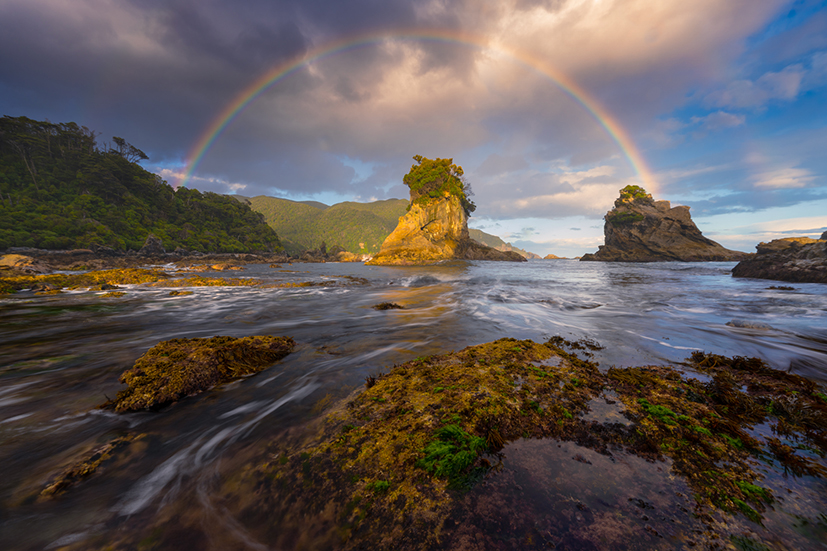
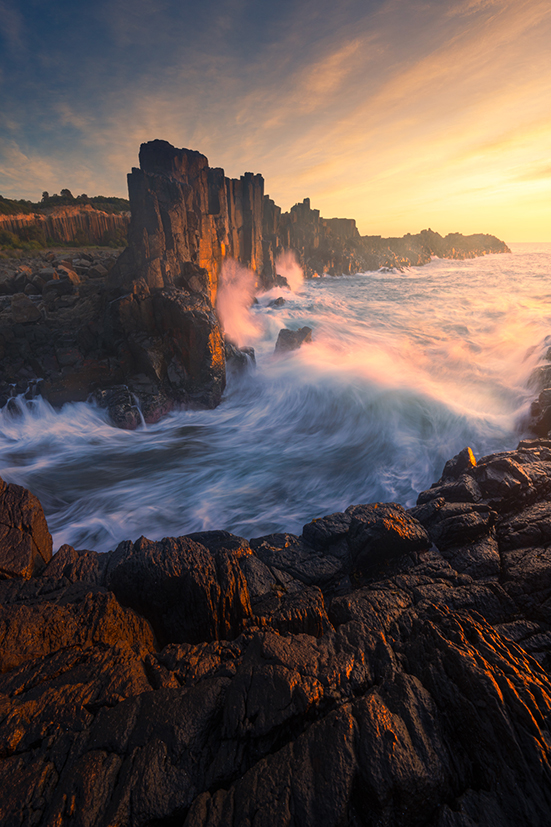
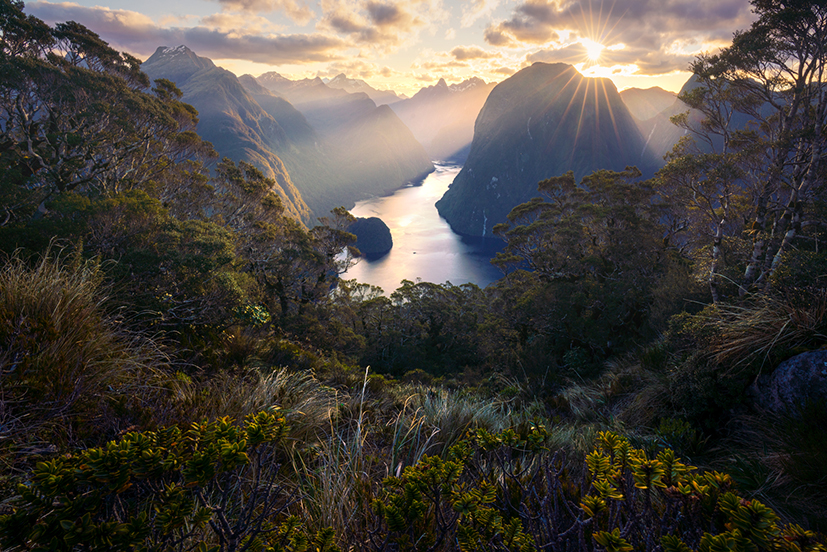
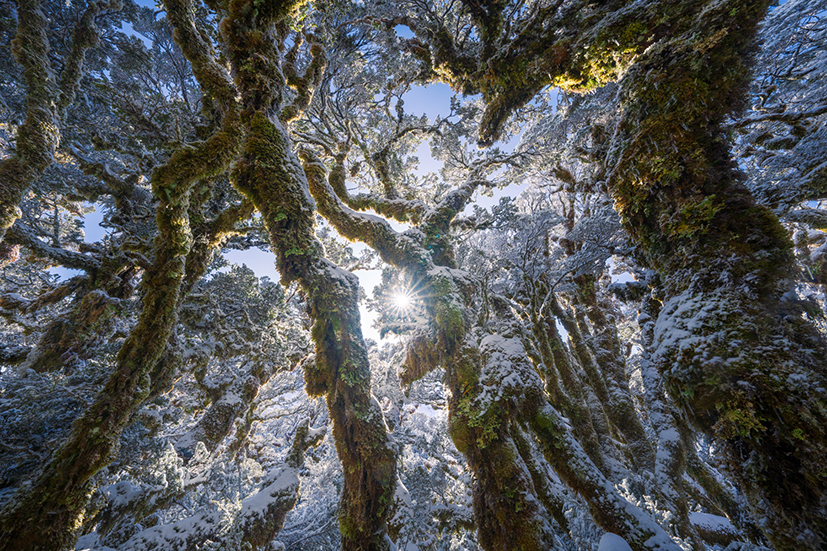
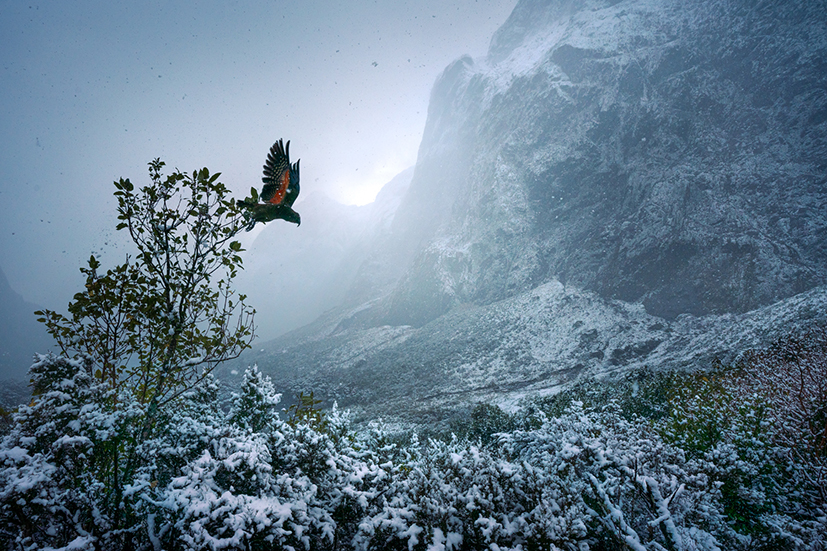
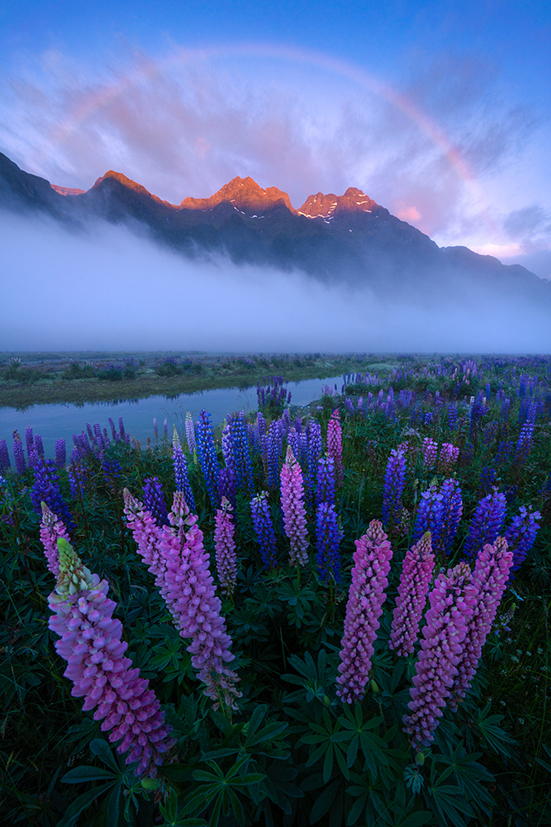
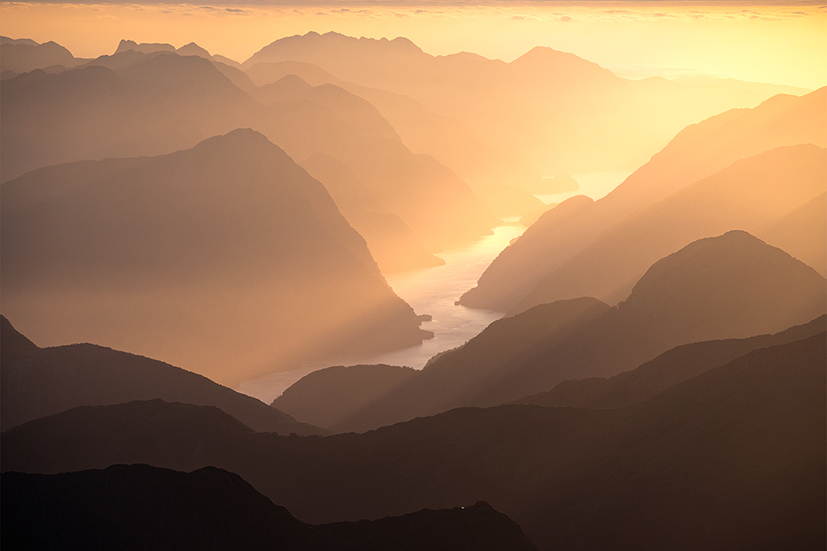
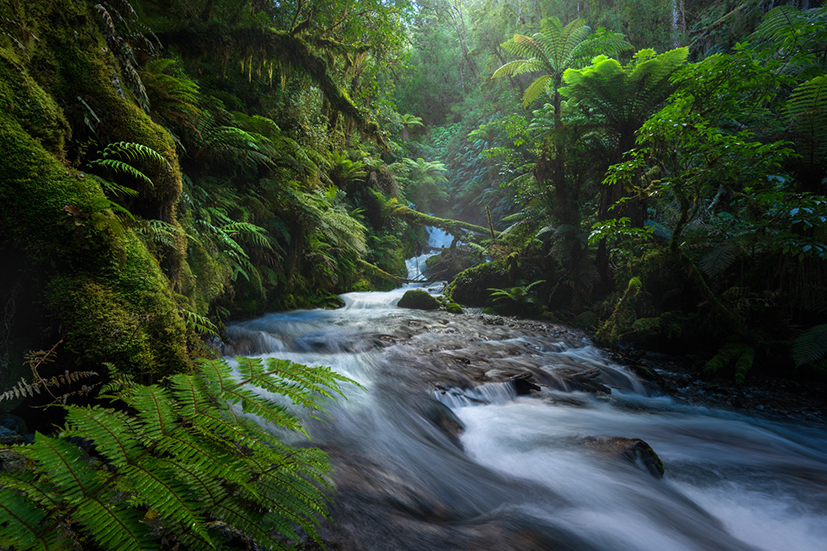
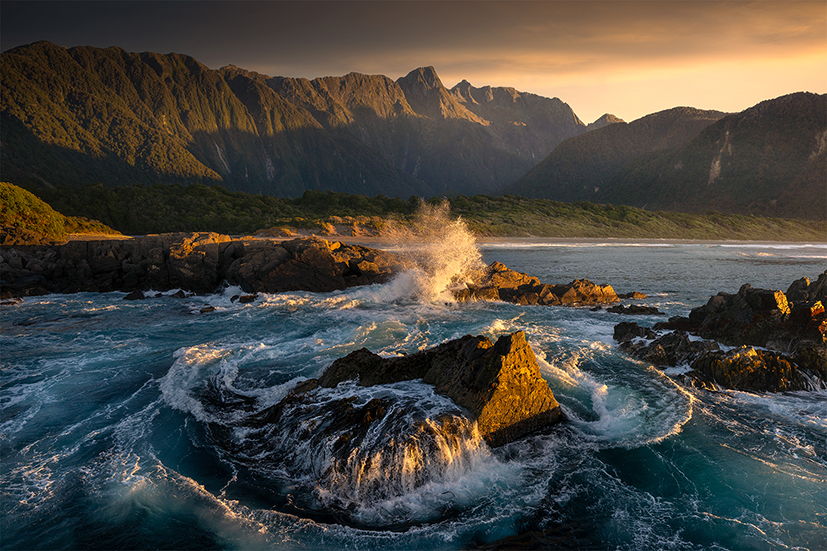
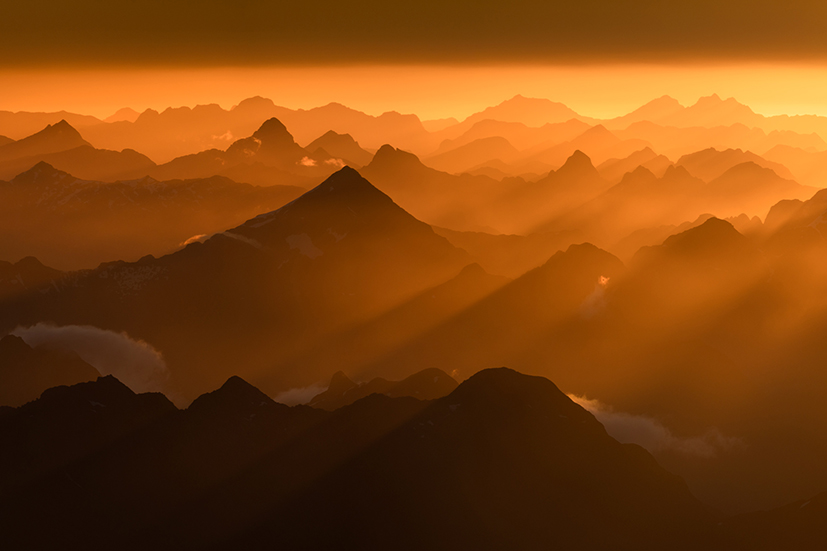
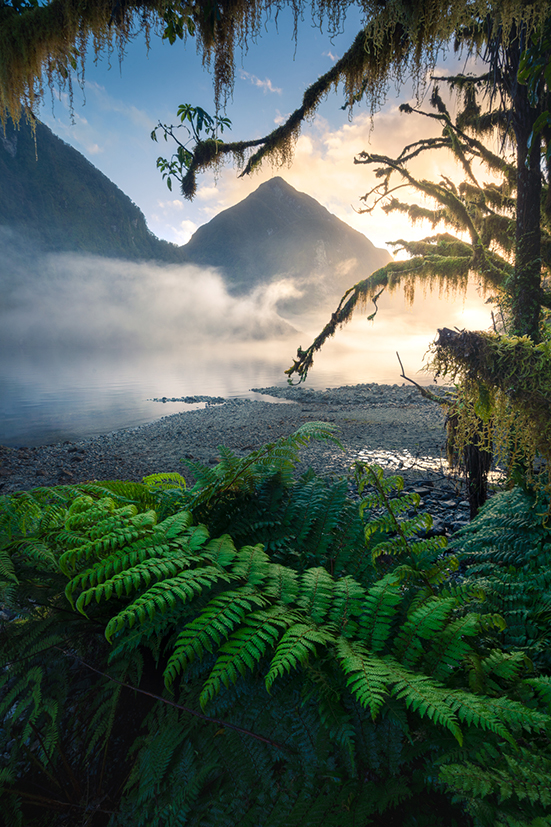
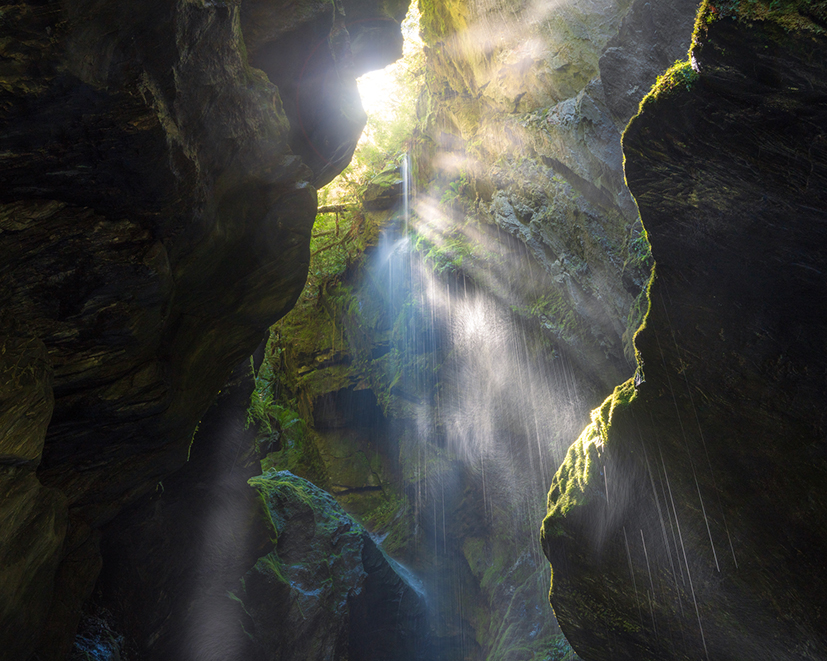
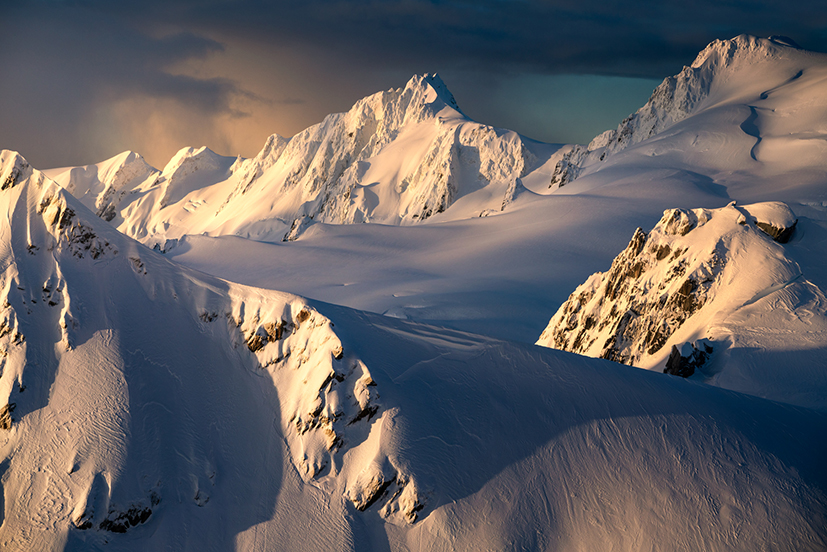
About Editor Huijun (HJ) Yang, Ph.D.
In this series, Dr. HJ Yang, Scientist, Businessman and Nature Photographer, talked to some today’s world well known nature photographers, sharing with us not only their unique artistic magic images and photo programs, but also their personal life stories.
A Conversation with Dr. HJ Yang Series:
Daniel Kordan: World-renowned photographer and explorer
Marc Adamus: Visionary and Innovator of landscape photography
 |
 | Gila Koller PRO Great landscape photos and very interesting interview. Congrats!! |
 | Sunil Kulkarni PRO Excellent interview and amazing captures love it |
 | Miro Susta CREW Very interesting interview fabulous photographs, I fully understand and support your comments on AI William. |
 | Eiji Yamamoto PRO Thank you so much for this wonderful interview with beautiful and great photos! It's very inspiring! |
 | Jacob (Jian) Xu CREW Spectacular landscape images, Congrats! Thanks to Dr. HJ Yang and Yvette! |
 | ABDERRAHIM ZIGH PRO
Greaat 🙏🙏🙏 Stunning images & wonderful interview... |
 | JA Ruiz Rivas PRO
Muchas felicidades y gracias por compartir...
|
 | Molly Fu APA PRO Stunning images, wonderful interview...congrats! Thanks to Dr. HJ and Yvette for sharing! |
 | Thierry Dufour PRO Splendid work, images of great beauty. Congratulations !!! |
 | carlo borgatelli PRO really wonderfull pictures |
 | asela PRO Amazing! |
 | Subhajit Das PRO Great work. Congratulations! |
 | Wonderful series |
 | Cristiano Giani PRO ...great landscaper, stunning images. Many congrats and thanks for sharing... |
 | Jane Lyons CREW Insightful interview and fabulous landscapes. Thank you very much, HJ. |
 | Wonderful photographs and very interesting interview, congratulations! |